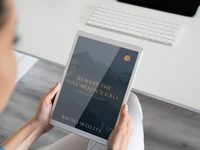Master Superb Editorial Writing! Write an Editorial Like No Other
You’ll find editorials all over the media, but what are they actually? Editorials are the kind of content pieces that writers publish in magazines and newspapers to share strong opinions.
Most editorials don’t feature original reporting, but instead, convey the writer’s personal opinions. Since personal opinions aren’t an unbiased way for one to write, writers create them in first-person. They don’t appear in magazine’s news sections so that readers can distinguish them from reporting.

What Is Editorial Writing?
Authors write an editorial as an opinionated news story that grabs readers' attention and spreads the author’s message. For an opinion piece published in school newspapers, news, and magazines, editorials don’t investigate a topic. Instead, they open up with a thesis statement that’s explored throughout the rest of the article.
Types of Editorials
Not all published editorials are the same. If you wish to write an editorial and successfully prove your main point, first, choose the right type of editorial.
A good editorial falls under one category among these four different types:
Praise Editorial
The praise editorial is a literary piece in which an author chooses to write an editorial about a person or an event that they feel strongly about.
In such an editorial piece, the author expresses their respect, support, or admiration with an example of one's contribution to the betterment of society to the reader.
Critical Editorials
Authors write critical editorials with a beginning thesis statement on a controversial subject that are similar to a research paper in a way. This editorial piece has an introduction, thesis, opposition, statistics, and a conclusion that sums up the author's take on a current issue.
Most of the time, authors provide evidence for their claims, and it's also common for them to give an example that can explain why they consider their viewpoint correct.
Authors typically write an editorial article with a specific purpose in mind, and that purpose can be either for the author to strengthen their view and position on the topic, make a stronger argument, or spur a call to action to be made.
Persuasive Editorials
Persuasive essay writing, or persuasive editorials, aim to attract the reader's attention while simultaneously promoting the writer's opinion. Here, the author decides to write an editorial because they want to spread their opinion or philosophy and gain more support.
This type of editorial looks a bit more like a classic article you'd find on a blog; however, it's different because higher standards are used when writing an editorial compared to how authors write a blog post.
Persuasive editorials, as the name suggests, are made to express the author’s point of view and make a strong case for it. Many authors publish these editorials in an effort to persuade the audience that their viewpoint is the accurate one.
These editorials open up with a thesis statement, while the rest of the text is devoted to arguments and explanations that serve to prove the author’s point of view.

News Editorials
News interpretation is a newspaper article that presents a current news angle.
News interpretations give a perspective of recent events and put them in context for the broader audience. Most of the time, these editorials do refer back to published and reported stories but don’t delve into actual investigative journalism.
Instead, the author analyzes a story from several standpoints, often going back to its source to recall originally published information.
What Is Good Editorial Content or Markings of a Strong Editorial Writer?
Good editorials make strong cases and are based on thorough research that leaves little to question. Regardless of what type of editorial you choose to write, your researching and literary writing skills will oftentimes determine how well your editorial will be received.

Publishers select editorials based on content relevance, writing quality, and how thoroughly research was done. Here’s a brief checklist of what a good editorial should look like:
· Original Reporting and Ideas on a Complex Issue
· A Compelling First Paragraph
· No First Person Statements
· A Strong Argument
· Researching and Credibility
· Exploring Different Viewpoints and Possible Solutions
· Credible Sources
· Controversial Topics
· No Grammatical Errors
Pass the Editorial Board
An editorial board decides which guest tutorials will be chosen for publication. As with most pitches in the publishing world, more applications are rejected than approved.
Some of the common reasons for rejection include poor quality writing, sloppy research, or insensitive wording on controversial topics that may expose the newspaper to legal liability.
Join Great Editorial Writers, Write an Editorial Like a Pro!
Learn What it Takes: How Publications Select Editorials
You’re more likely to successfully write an editorial for a magazine or newspaper if it’s written on a popular topic. The topic you’re writing about should be relevant at the present moment.
You should have some authority, experience, or education in regard to the topic you’re writing about. Make your experience known and explain in your content the reasons why you think your opinion in that particular situation is relevant.
Beyond that, submit only spotless writing based on thorough groundwork and structured in such a way that leaves little space to refute your argument.
Find Hot Editorial Topics
Writing good editorials begin with choosing a topic you’re passionate about. There are many trending topics to choose from, but not all of them are a good fit for your unique writer sensibility, style, and intellectual inclinations.
Choose a topic you’ve been studying for years because it’s more likely that you have unique insights and opinions, as well as better vocabulary and language skills in that area.
The same goes for researching. If a topic is from the category you’re already invested in, you probably know where to “dig up” relevant information that’s may be publicly available, but not readily accessible to the average reader.
Neat Editorial Outline and Structure
After carefully choosing a topic, now comes the most thorough research that you can afford to do. For an editorial, you’re not expected to act as an investigative journalist, but you should check every argument, piece of information, fact, number, and statistic before forming and writing up a strong opinion on a topic that divides society.
Formulate a strong thesis with a solid structure to match. When people read about triggering topics, they often emotionally want to oppose the author, so they’ll look for any excuse to downplay your writing. Don’t let that happen!
Offer a unique perspective on the topic by choosing up to four main points that leave little space to debunk your thesis.
Both your thesis statement and your key points should be formulated clearly and concisely with little to no room for misinterpretation.
Check if You Have a Good Editorial
With trending topics and divisive events, at least half of your readers will either disagree with your writing or want to strongly disagree with your arguments. Scrutinize your editorial before publishing so that no commentary or counterarguments leave you surprised.
Editorial Writing Process FAQs
Do you want to write an editorial that measures up to the highest editors' standards and captures the reader's attention? First, learn about the basics of what editorials are and what the writing process looks like.
What Editorial Writers Do?
Editorial writers explore topics they’re passionate about. Upon doing thorough research, they formulate a strong opinion, statement, praise, or a thesis on a currently relevant topic.
Because of how an editorial is laid out, the editorial writer can sometimes be confused for a reporter, but they're not the same. The similarity ends with the form, while the essence of what it takes for a reporter to do their work versus what's needed for an author to write an editorial is completely different.
The topics that editorial writers choose can be sensitive, controversial, or socially dividing, which is why it’s necessary for the author to use strong, confident, yet dignified and eloquent language to avoid insulting the audience or exposing the newspaper to legal liability.
What's the Purpose of an Editorial Piece?
Editorial writing is an opportunity for a newspaper to publish a strong piece on a currently trending topic. For a writer, it is an opportunity to gain exposure and express opinions on topics they’re passionate about.
For the newspaper, editorial publishing contributes to staying relevant and up-to-date with current events. For readers, editorials are a chance to hear different opinions and learn information that they likely didn’t know before.
What's Editorial Control?
Editorial control is the right of the journalist, or the newspaper or magazines, to affect certain aspects of publishing, like the choice of topics, schedule, content, or resources allocated for research and investigative purposes.
It’s commonly popular for newspapers to allow journalists as much freedom as possible, but the level of editorial control over articles varies depending on the publisher, journalists, and the current sociopolitical climate.
What's the Difference Between Industrial and Editorial Copy?
Industrial, or commercial, content ideas are used to promote a product or a service, while editorial content belongs to the category of journalism. Industrial copy trends often follow the calendar year, while an editorial publication grabs readers' interest by offering a strong opinion and solutions on a particular topic.
Writing an editorial isn't difficult as long as you follow the simple rules of quality writing. Don't forget to give your editorial an introduction, an opening paragraph in which you summarize the topic, and then make a strong argument for your opinion with evidence to prove it.
When writing an editorial, draw ideas from whatever you're interested in and passionate about, but keep the reader in mind. Both the reader and the editor will prefer evidence-based pieces that prove a point.
Don't confuse these pieces for regular articles though because readers expect an editorial to be impeccably written, which is exactly what an editor expects in order to publish your editorial articles.













